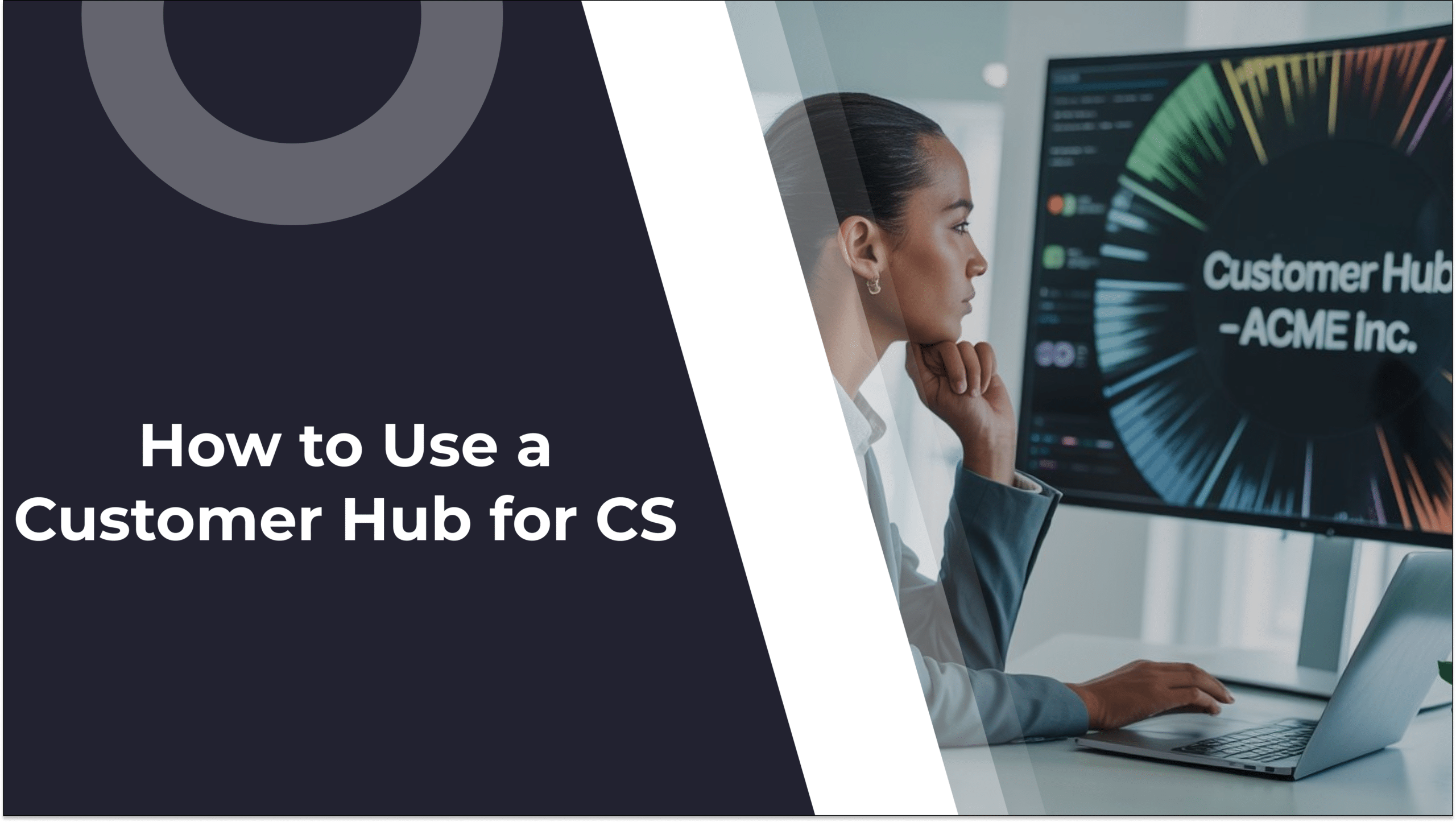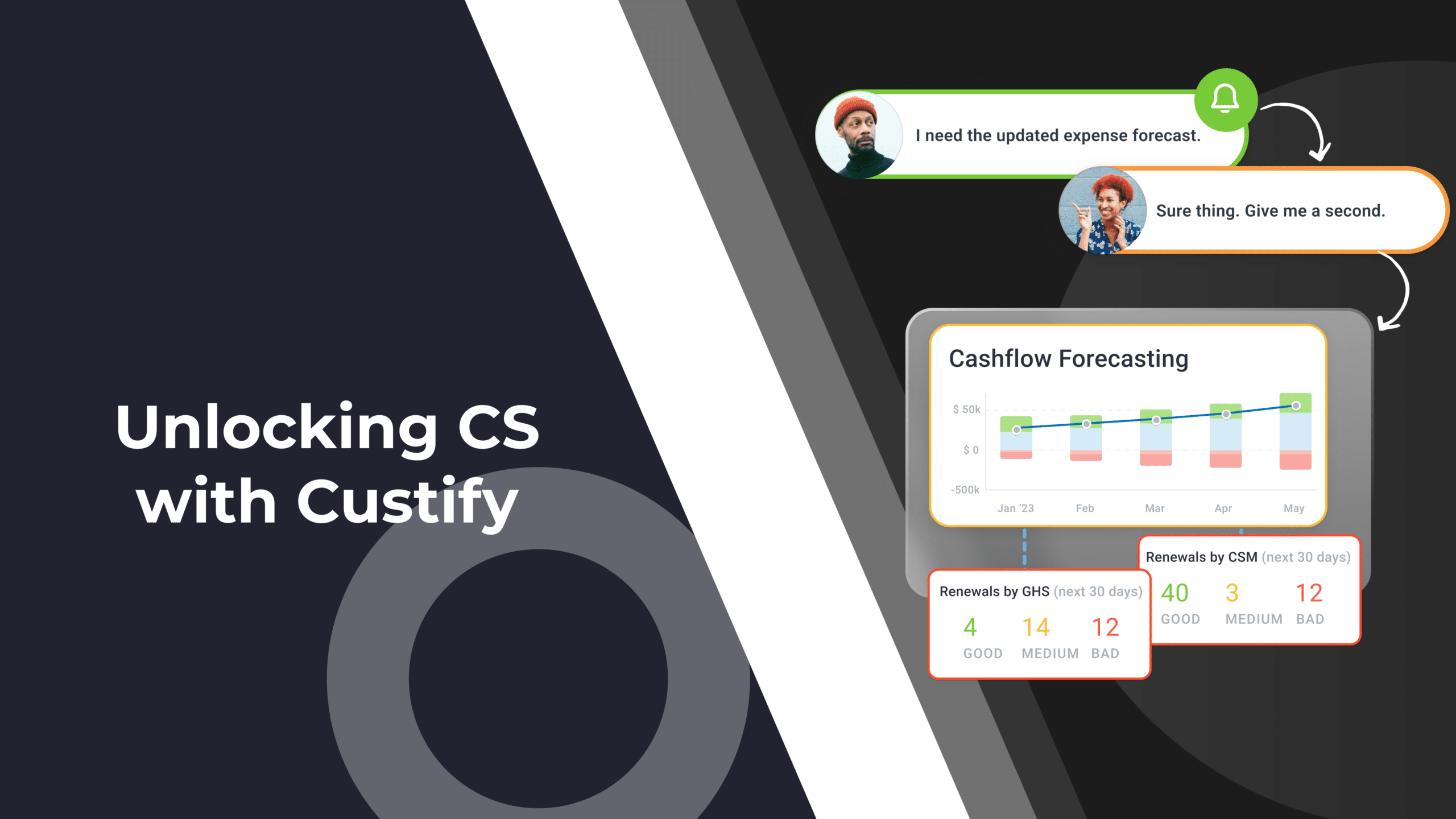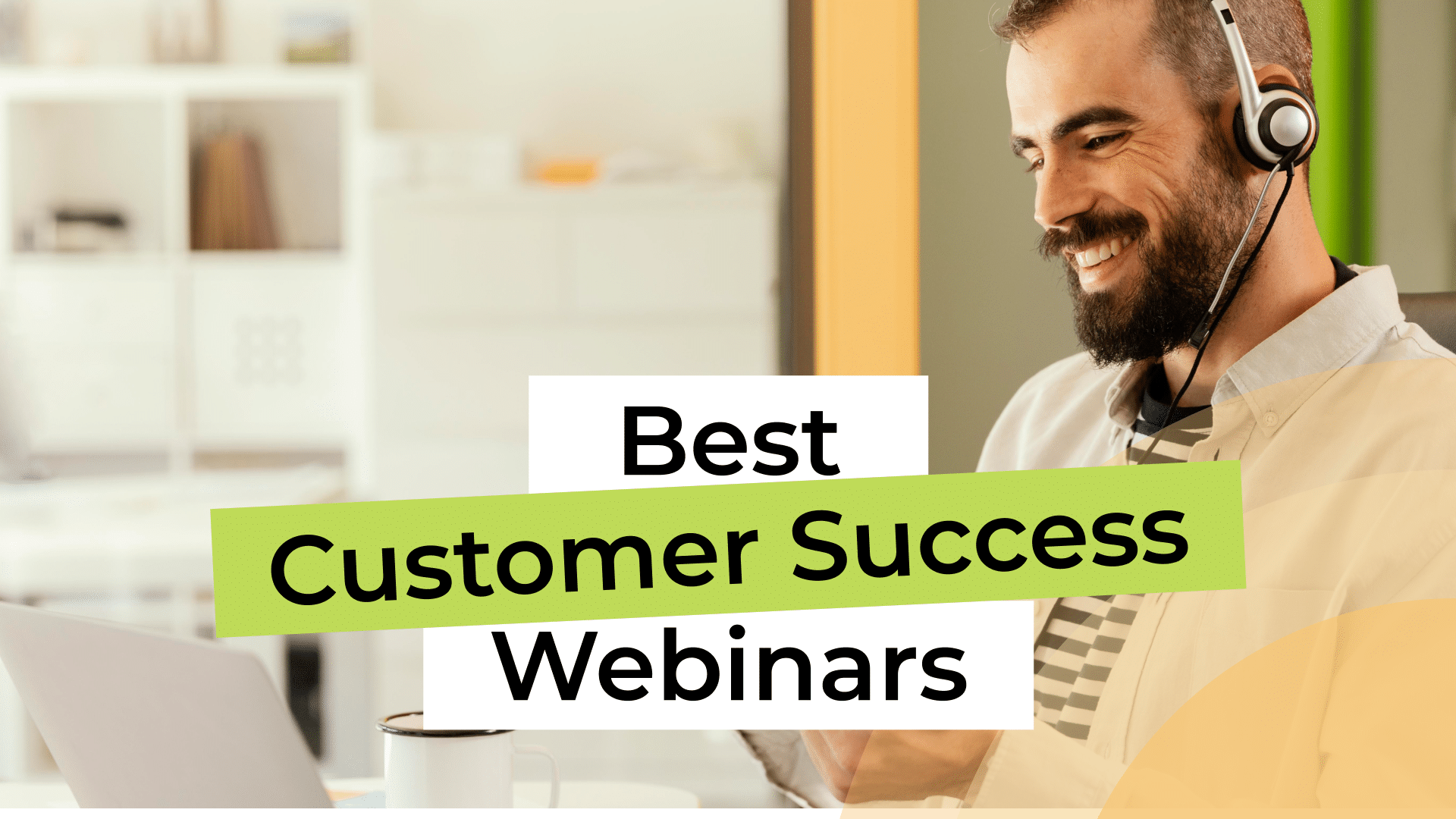If you’re like many SaaS Customer Success professionals we know, you’re probably deep in 2020 planning.
You have a lot of ideas, but you know you can’t do everything at once. You’re going back and forth on what is likely to make the biggest impact in your customer success strategy.
All so you can focus your efforts and set your team and customers on the road to success.
To help you do that, we talked to 9 SaaS Customer Success experts from around the world, across a variety of industries. The best of the best, from North America, Latin America, Europe, and Asia.
We wanted to hear their best piece of advice – what their #1 practice they actually implemented that made the biggest impact on their work. How they’ve been able to serve their customers, and thus their bottom lines, in the past year.
By combining their answers, we’ve created a step by step SaaS Customer Success roadmap you can customize to your specific operations in 2020.
#1 Get Direct Feedback from Customers, Even When Things are Going Well
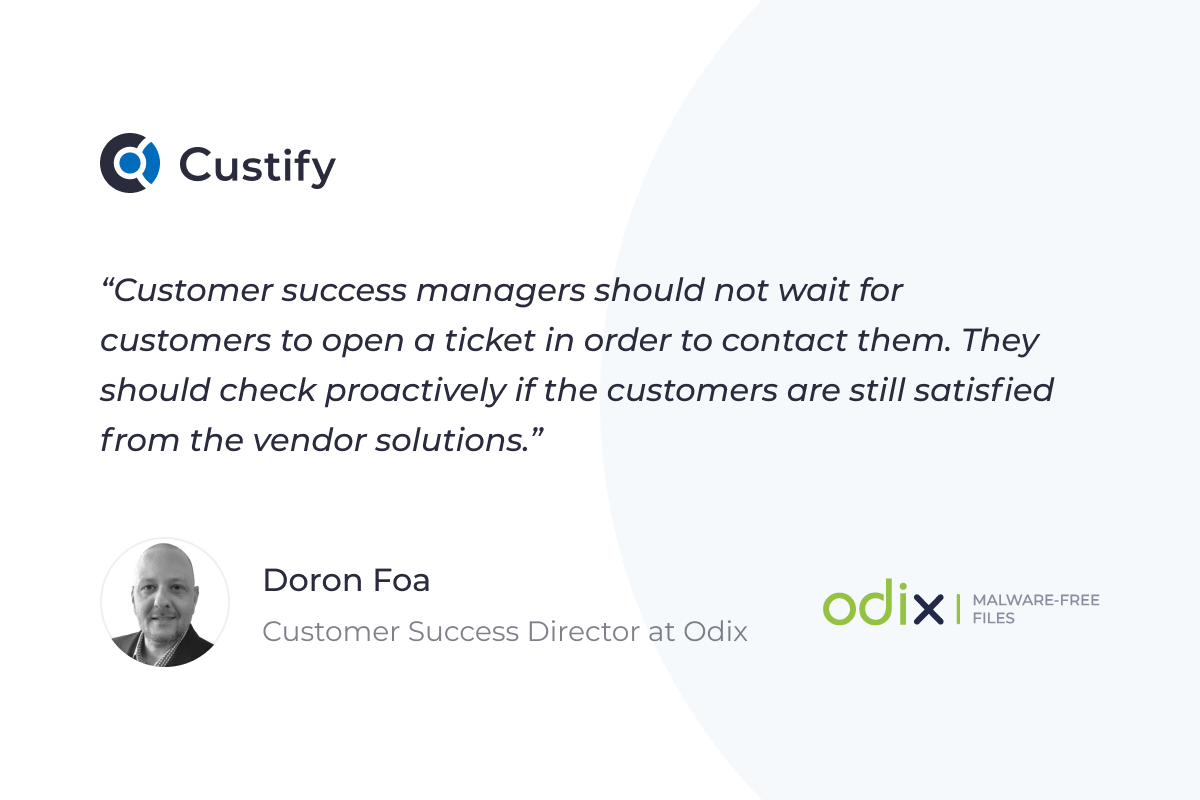
Hands down, the #1 piece of advice we heard over and over again is that customer success is about being proactive in ensuring customer satisfaction.
“An important thing I adopted this year is to proactively have discussions with our customers periodically,” said Doron Foa, customer success director at odix, a content disarm and reconstruct (CDR) company. The company’s technology provides preventative cybersecurity solutions against both known and unrecognized malware for organizations like the European Investment Bank, Dominion Energy and Curtiss-Wright.
Initiate Feedback Requests To Detect Satisfaction Gaps
Foa, who’s based in Israel, made this decision after 15 years of managing software and network projects, working with corporate customers at Comverse and IBM, leading both proof of concept and post-sale tasks, before joining odix.
“Customer success managers should not wait for customers to open a ticket in order to contact them. They should check proactively if the customers are still satisfied from the vendor solutions,” he said.
Give Customers Access To Your Product Team To Show Them Their Feedback Matters
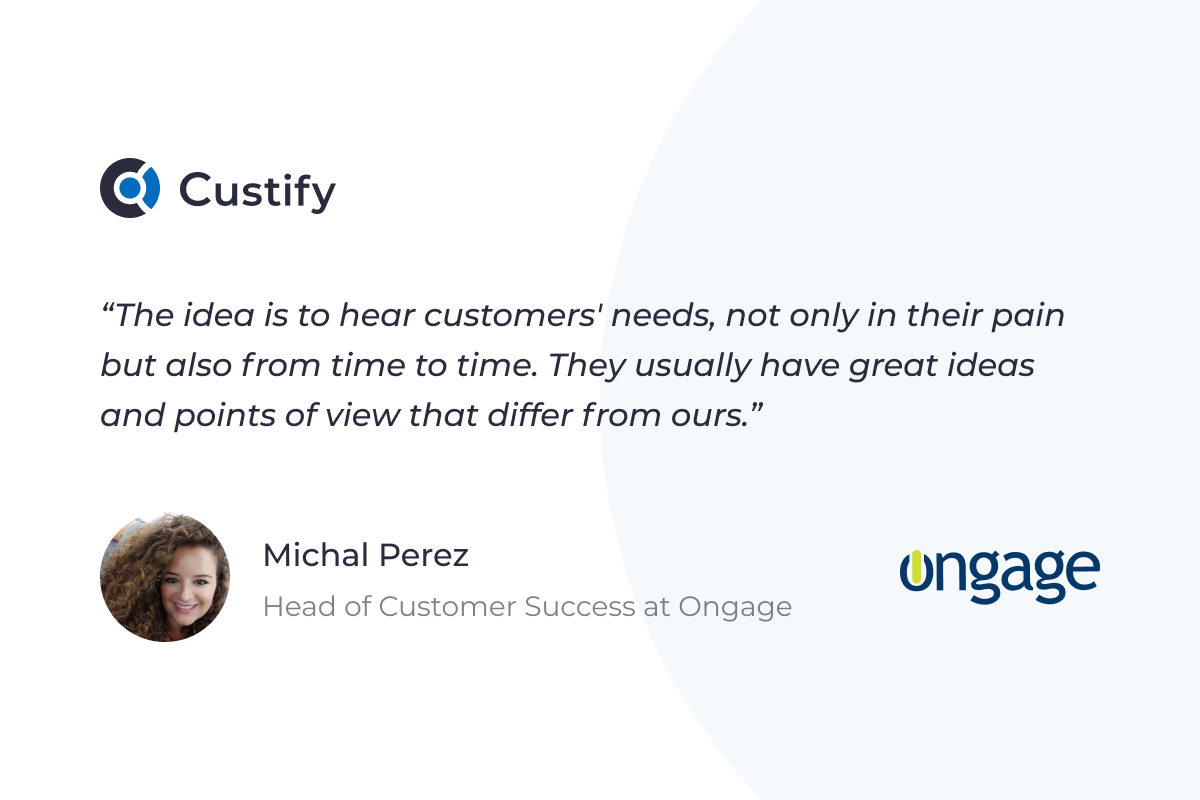
Getting feedback from customers can be a one on one process. Michal Perez, a customer success specialist from Israel with a background in marketing, found that meetings that let customers talk to her research and development managers – sometimes in roundtables with additional customers – “really made a big impact.”
Perez spent several years in corporate marcom at Orbotech, before transitioning to SaaS customer success in early 2017 at Camilyo, which offers local marketing solutions. Now she is the head of customer success at Ongage, an email marketing platform for performance marketers at companies like Udemy and Playtika.
According to her, providing customers this much access and impact helps them feel important, like “real partners in the company’s process.”
“The idea was to hear the customers’ needs, not only in their pain, but also from time to time. They usually have great ideas and points of view that differ from ours,” she said.
Discover Surprising Ways Customers Use Your Products
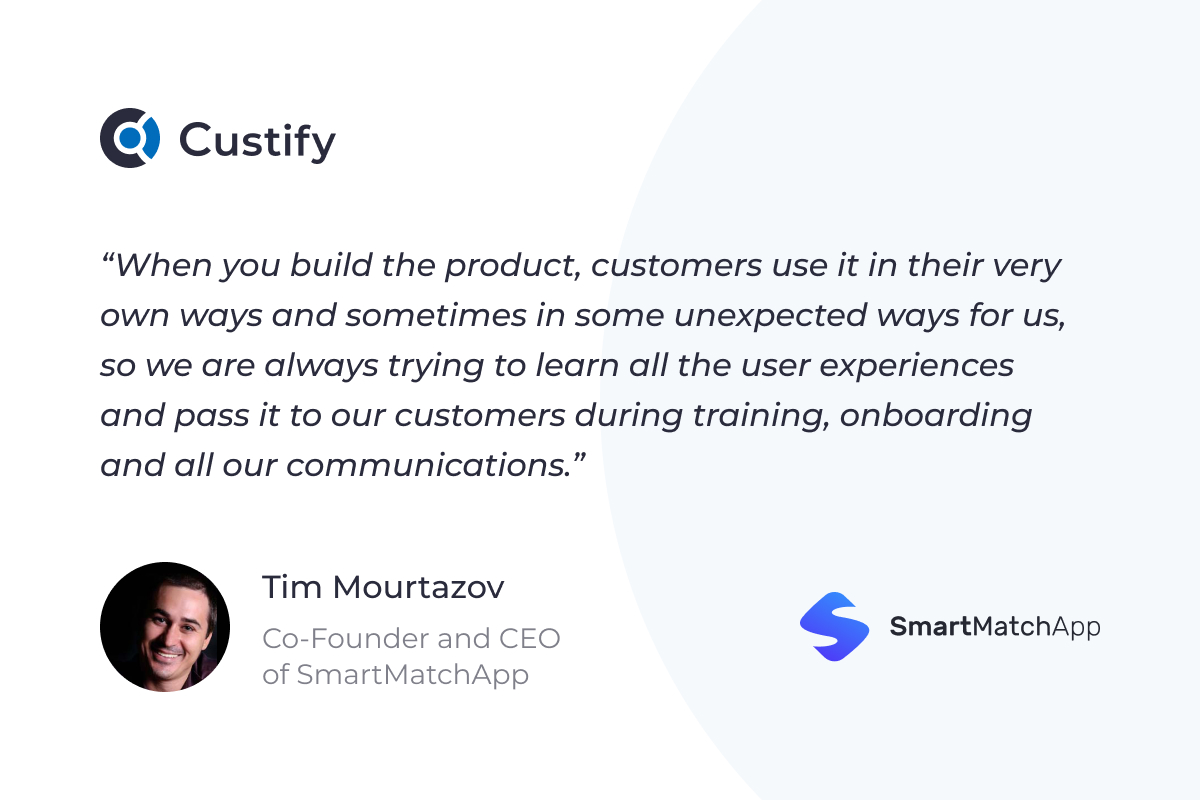
Tim Mourtazov, co-founder and CEO of SmartMatchApp, a Canada-based award-winning app that maximizes matching and connecting opportunities for matchmakers, connectors, event and community organizers, agreed.
Before SmartMatchApp, Mourtazov developed international business growth for companies in a range of industries. Among others, he gained over a third of the market share for Modasphere, a talent management software solution, and signed deals with some of the largest airlines in the world for Air Data, a system that purifies air by eliminating bacteria.
He learned that “when you build the product, customers use it in their very own ways and sometimes in some unexpected ways for us, so we are always trying to learn all the user experiences and pass it to our customers during training, onboarding and all our communications.”
Mourtazov also advised you talk directly to your customers. “A simple question like, ‘Please can you tell me how you use our product every day?’ will go a long way,” he said.
And speaking of a long way, how do we ensure customers even give us a real chance to show them how we can help?
The answer awaits at the very beginning of their journeys with us.
#2 Design Customers’ Activation Period to Drive Quick Wins
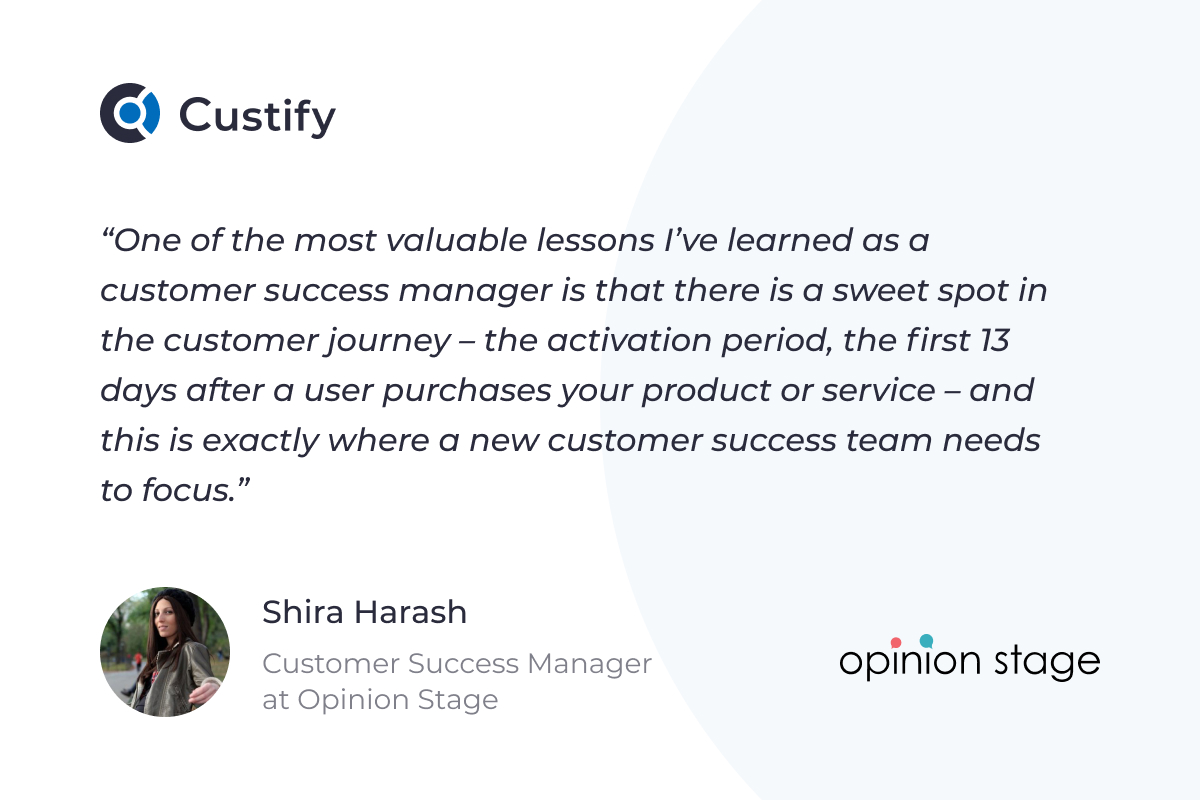
“One of the most valuable lessons I’ve learned as a customer success manager is that there is a sweet spot in the customer journey – the activation period, the first 13 days after a user purchases your product or service – and this is exactly where a new customer success team needs to focus,” said Shira Harash, customer success manager at Opinion Stage. The company converts interactive content traffic into leads, sales and actionable data for over 150,000 customers, including BBC, Outbrain, TripAdvisor, Mazda and Uber.
Harash explained that “what takes place (or does not take place) during this period will be reflected in the lifecycle of the customer.”
So how can we create a positive start for customers?
Establish Key Activation Milestones To Ensure Quick Wins
“During this time, you’ll want to make sure that your product or service sticks, which means you need to demonstrate quick wins to the customer,” Harash said.
To ensure customers are on track to get these quick wins, Harash recommended that you “establish key activation events that are measurable for you and your team. This can include the number of activities the customer has performed in the platform, time spent using your product, teammates added to their account, number of help docs they have read or the number of tutorials they have viewed.”
Communicate Directly With Customers (Especially If They’re Not Reaching Milestones Or Gaining Wins)
Harash, who’s now based in Israel, started her professional customer-facing career as an account executive of digital ad sales in New York, at USA Today. She then worked her way up through various positions to enterprise sales development at ClickTale.
She transitioned into SaaS customer success in early 2017 at Hotjar, an audience research and optimization tool for online businesses, before joining Opinion Stage in early 2019.
In her work, she has found that communication with customers during the activation period is key. “I especially encourage communication when a new customer is not meeting your key activation events. Do they need additional resources or training? They will be most inclined to respond during the activation period, and you cannot afford to not get their feedback,” she said.
This can take many forms, but a personalized approach will make the biggest impact. “You may need to send very personalized emails or in-app messages to understand what they are trying to achieve, so that you can indeed demonstrate the value or advise them on better product usage,” she said.
For Harash, the results have been worth the effort. “At a previous company, our churn fluctuated between 2-3% per month, which I consider stellar numbers,” she shared.
Thanks to an initial focus on personalized communication, the team’s workload decreased in the long run. “A vast majority of our customers were low-touch accounts that had minimal communication with the customer success team. I can attribute this success to our focus on the activation period,” Harash added.
Optimize Internal Processes Across Departments To Make Onboarding More Efficient For Your Customers And Your Team
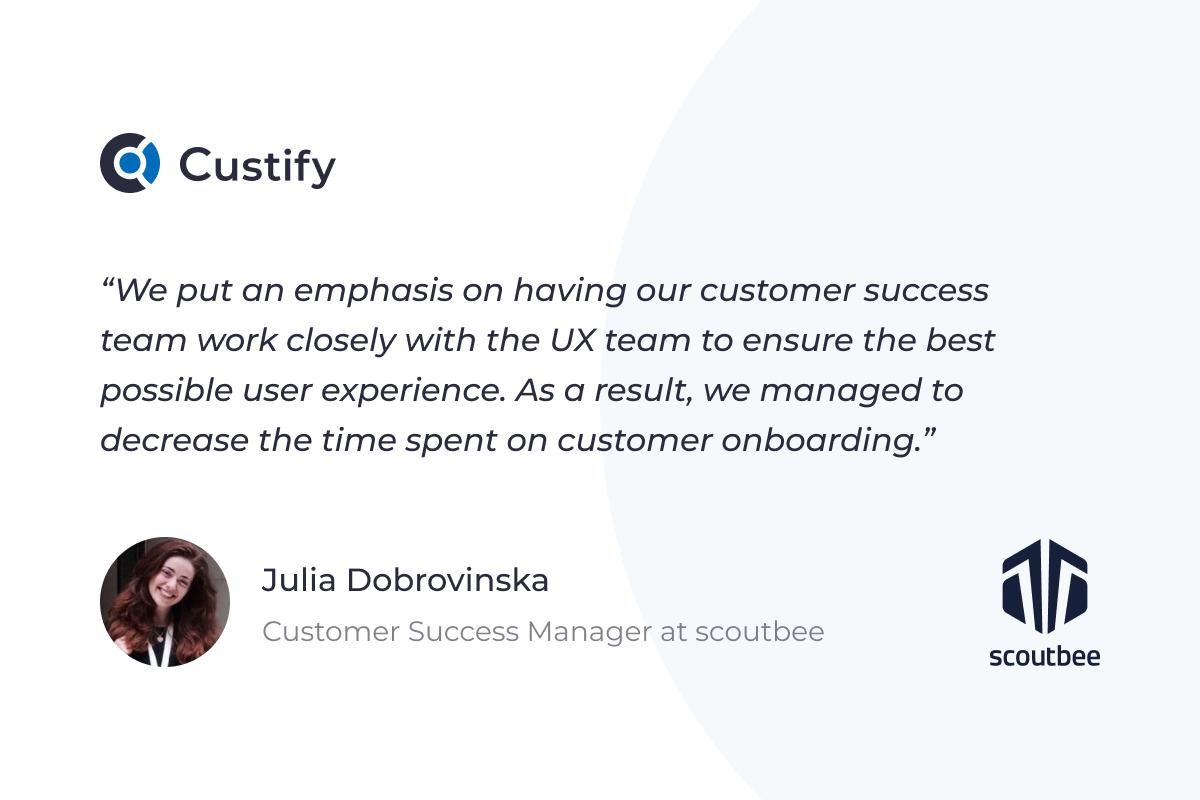
Julia Dobrovinska was also able to decrease the workload while improving onboarding results in her work as customer success manager at Germany-based scoutbee. The company is an AI-powered supplier discovery suite that helps procurement leaders at companies such as Audi, Airbus, Bosch Rexroth and DMG Mori make more confident buying decisions.
“Our team focused on optimizing internal processes to improve communication with our customers and bring more transparency to the customers onboarding process. This included tracking the efficiency of the onboarding process, collecting customers’ feedback, and understanding customers’ pain points better,” she said.
Then it came time to make some changes. Dobrovinska, who’s been managing client relations and customer success since 2014, knew that the customer experience was the most important factor for increased lifetime value.
She’s retained clients at Matomy (a global performance marketing company), YeahMobi (a performance based mobile advertising network) and i2x (a real time speech analytics and communication coach for sales and customer service agents), before joining soutbee.
At scoutbee, she and her team understood that, to make the biggest impact, they needed to create a cross-team collaboration – and it paid off. “We put an emphasis on having our customer success team work closely with the UX team to ensure the best possible user experience. As a result, we managed to decrease the time spent on customer onboarding,” Dobrovinska explained.
Once the onboarding experience is optimized and customized to the customers’ needs, it’s time to fulfill the promise of the activation period and keep it going throughout their lifecycles.
Here’s how our experts do it.
#3 Focus on Customers’ Core Needs Instead of Over-Selling Cross-Feature Adoption
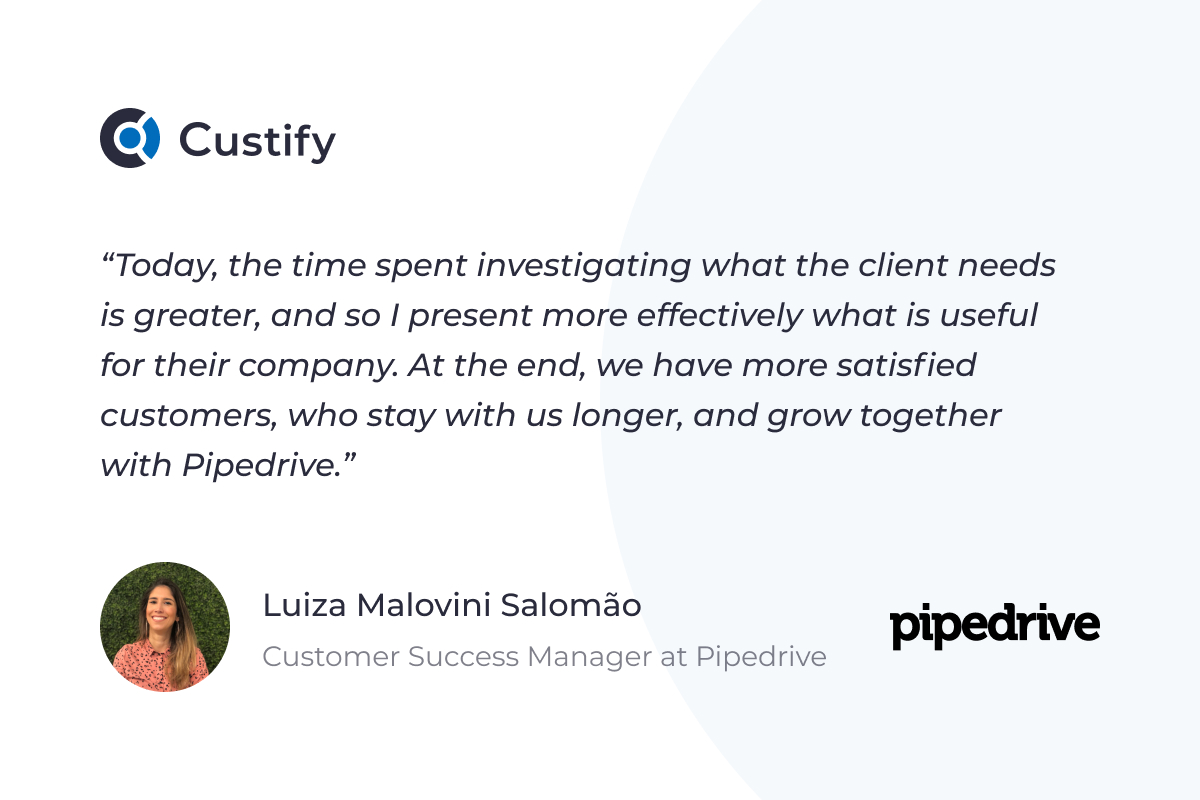
Once a prospect has converted into a customer, it’s very tempting to try and convince its team members to use every single feature, as fast as possible. All in hopes that this will get them to stick around long term. You don’t need to do that.
At the beginning of the year, “my focus was to explain everything that the system had to offer, or at least what I considered most important,” said Luiza Malovini Salomão from Brazil, customer success manager at Pipedrive. The company is a sales CRM and pipeline management software that aims to make success inevitable for its 90,000+ customers, including Amazon, Vimeo, RE/Max, Skyscanner and The Next Web.
Salomão, who started her professional path in marketing in 2011, has done everything from branding, merchandising and promotional campaigns, to CRM management and sales team support. In summer 2018, she joined Pipedrive to begin her journey in customer success, and has learned a lot in her first year on the job.
She now focuses on discovering what her customers need, and only then offering a solution. “Pipedrive has a very large number of features. But with the little time we have available with companies, and also to save time with them, in a market where time is money, if I really don’t understand what they need, the meeting doesn’t become productive,” she said.
It’s the small details that make the difference. “For example, a great feature of the Advanced Plan is the possibility of integrating your email to the account. But if your company is an essentially telephonic company, I could save this time in which we would talk about email, to show phones solutions integrated to Pipedrive, or even our own call feature,” she said.
Salomão’s growth as a customer success manager this year is a bonus tip to anyone who manages CSMs: invest in your team’s success. Salomão attributed her shift to professional training Pipedrive provided her team, where she learned “to listen better to what the customer is looking for, to ask the right questions, not just any (or a lot of) questions, to achieve your goal more easily, besides satisfying the customer’s needs,” she shared.
Implementing her training, Salomão has been seeing great success. “Today, the time spent investigating what the client needs is greater, and so I present more effectively what is useful for their company. Meetings have become more productive, even if initially the time spent to understand the company is greater. At the end, we have more satisfied customers, who stay with us longer, and grow together with Pipedrive,” she said.
#4 Get Your Customers Practical, Not Just Theoretical, Product Training

Your team members aren’t the only ones who need training to grow. To ensure long term SaaS customer success, it’s important to provide customers with effective product training.
What does that look like?
“For the things we have to learn before we can do them, we learn by doing them,” shared Lee Berkman, quoting Aristotle. Lee is an enterprise sales executive at Israel-based CloudShare, a cloud specialty company that helps software organizations – including NASDAQ, Palo Alto Networks, Atlassian, ForgeRock, Dell and HP – with training, sales enablement, sandboxing for testing, and customer support.
“I have no doubt that, at the time, Aristotle did not have in mind modern learners,” Berkman clarified, but added that the advice is very relevant to today’s business learners nonetheless.
Berkman has been in the business world since 2008. He started in customer service and sales at Ellies Electronics, a leading South African manufacturer, wholesaler, importer, and distributor in diversified sectors.
Then, he worked his way up to becoming a customer success manager at WalkMe, a digital adoption platform that serves companies such as Microsoft, Cisco, PayPal, and Citrix, before joining CloudShare in early 2017. At CloudShare, he started in business development, became a virtual IT labs expert, and now works directly with customers from both startups and enterprises.
His experience has taught him that customers need to really understand your product to optimize results and adopt it long term.
“Make sure the learning you provide is engaging. Theoretical learning is important, but it’s limited, and I believe it can stunt comprehension,” he said, recommending leveraging virtual labs to replicate software environments, so that customers can practice the scenarios your software serves without the risk involved in making changes to their companies’ actual accounts.
#5 Automate SaaS Customer Success Processes to Reduce Backlog and Resolution Time
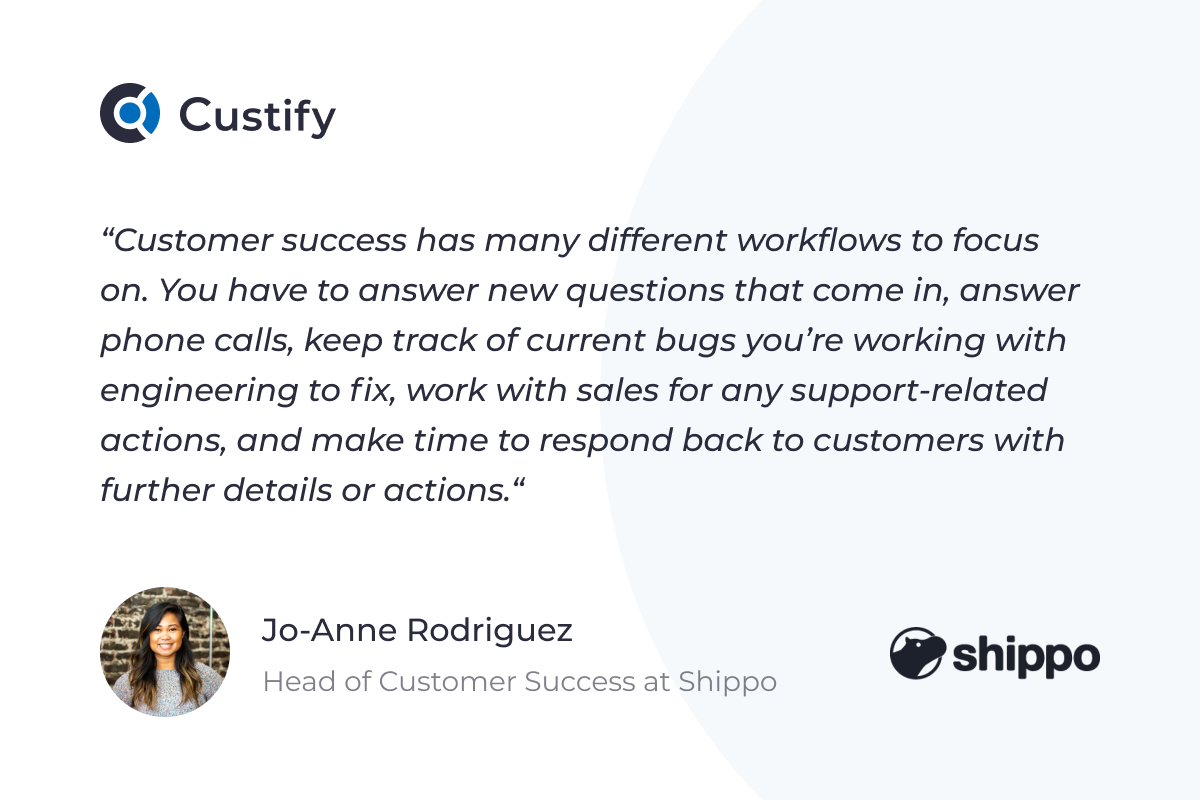
SaaS Customer success managers have many opportunities to make an impact throughout the customer lifecycle, but it can easily add up and become overwhelming.
“Customer success has many different workflows to focus on. You have to answer new questions that come in, answer phone calls, keep track of current bugs you’re working with engineering to fix, work with sales for any support-related actions, and make time to respond back to customers with further details or actions,” said Jo-Anne Rodriguez from the US, head of customer success at Shippo, a company that lowers the barriers to shipping for ecommerce businesses.
Rodriguez’s diverse work background helps her assess situations from multiple angles. After working as a junior project manager at Google, head of product support at Zendesk Cell, and director of customer success at OMNY (which helps healthcare organizations convert data into recurring revenue streams), Rodriguez knew there was a way to simplify processes and get better results.
“By changing and automating a couple workflows, we decreased barriers and made it easier to focus on answering customer questions and solving customer problems,” she shared.
According to Rodriguez, simplicity is key. A single updated workflow allowed her and her team to shorten resolution time and decrease overall backlog: “We created an automated but modern outreach flow for those customers we needed more information from, so that CS advocates didn’t have to remember on their own to reach out, while still getting the important information they need to help them,” she explained.
#6 Document and Analyze Processes to Build on What Works and Optimize Customer Lifetime Value
When you implement processes, document them along the way, so you can go back and analyze what worked and what didn’t. “We continually review and analyze the major customer-facing processes. For example, the setup and onboarding process was improved in the last year by enhancing the pre-deployment survey of our malware prevention technology. This action shortened the setup time dramatically,” said odix’s Foa.
When Mourtazov and his team analyze product usage logs at SmartMatchApp, they learn “what features our customers use the most and the least. It helps us help customers succeed in the way of better understanding their needs and directing them to the features they could use to most benefit from our product.”
#7 Increase Retention and Advocacy by Remembering that B2B is Actually H2H
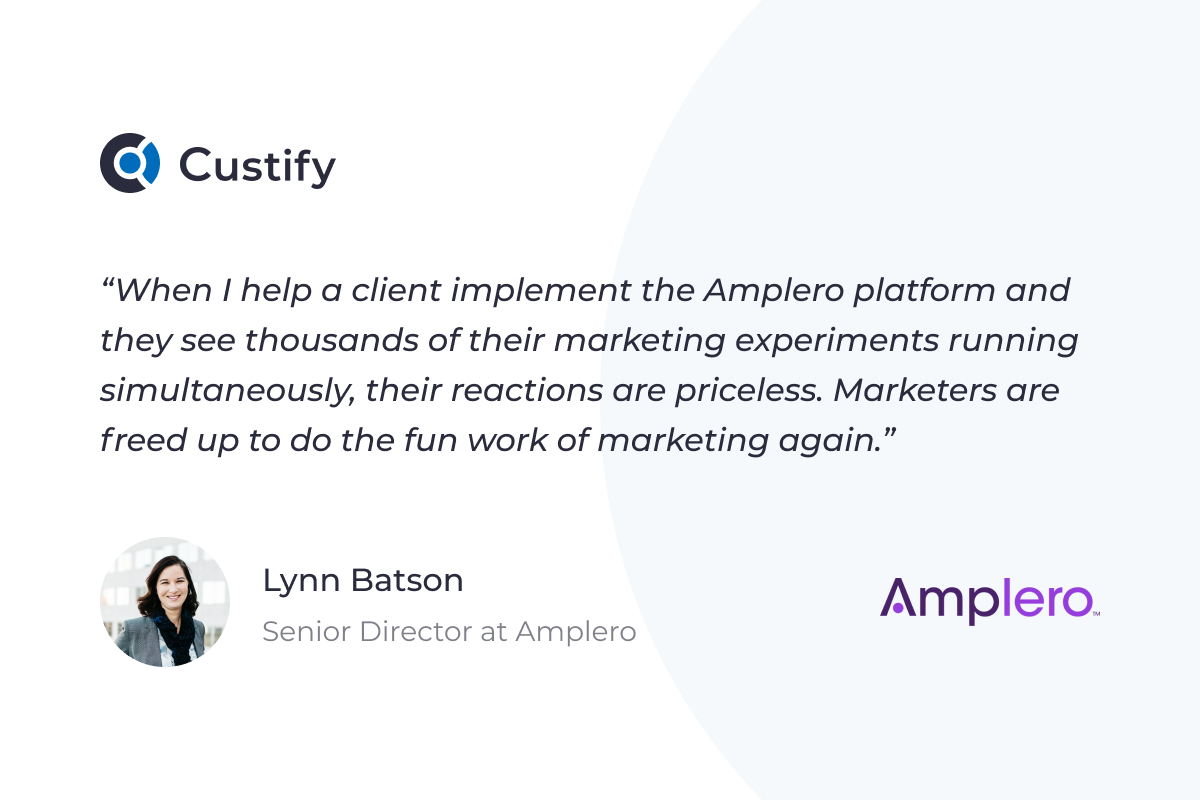
In a full circle, success in customer success comes back to making sure we serve our customers in the most accurate way, the one that supports them the most, even if we initially thought something else would work better.
All this is amplified when we remember to look at our users as human beings, not just large corporations or innovative startups. That’s the key advice Lynn Batson hopes customer success managers implement.
Batson spent almost two decades managing and consulting CRM, business intelligence and marketing operations. This includes over a decade at Allianz, a life insurance company with customers in over 70 countries, and almost a decade in her own US-based business, Expansion, which still operates today.
In 2016, Batson joined Amplero as the director of technical program management, where she’s also in charge of customer success operations. Amplero is a KPI-driven platform that determines the most effective messages for each customer sector, serving companies such as Sprint, PetSmart and Virgin Mobile.
“By the time I arrive on the scene, many marketers have given up on the dream of pushing beyond the limitations of A/B testing. Every time a new segment is identified through testing, the marketer gins up new rules off those new learning but, now instead of setting up four versions of a campaign, they need to manage five versions; then six, then seven… The better they are at their job, the more work it becomes,” said Batson.
On the satisfaction of seeing her customers succeed, Batson said: “When I help a client implement the Amplero platform and they see thousands of their marketing experiments running simultaneously, their reactions are priceless. Marketers are freed up to do the fun work of marketing again.”
“For me, seeing the transformation in a marketing team – exercising their freedom to be creative problem solvers rather than being buried by outdated and manual processes – is as energizing for me as much as it is for them. Of course, seeing the impact we are having on their business KPIs is awesome too, but seeing another liberated marketer is what really motivates me,” she added.
After all, business to business is very much human to human, and CSMs that remember that will find it much easier to increase adoption, retention and advocacy.
#8 Set Your Team and Customers up for Success in the New Year and Beyond
SaaS customer success professionals wear a lot of hats, and teams are constantly juggling between a wide range of needs across the customer lifecycle and the different sectors they serve.
If you have the bandwidth, create a game plan to implement the entire roadmap our experts set for you today. If you don’t, make sure you still set your team for success.
Choose one to three areas to focus on, and follow the experts’ advice. Once you master them, add additional areas.
As you can see from some of the case studies above, sometimes changing one thing – be it the onboarding process, the feedback we get from our customers, or treating them as human beings instead of business entities – makes a huge difference, that is easy to build on.

